
Jul 11, 2024Fresh Views: Grapevine disease management tackled
Last year posed significant challenges for grapevine growers in California as they battled against heightened disease pressure. Facing threats from several major fungal diseases such as powdery mildew (PM), botrytis and phomopsis cane and leaf spot (Photo 1 and 2), vineyard managers were forced to implement robust disease management strategies to safeguard their crops.
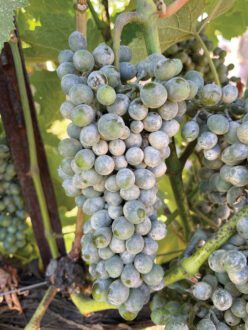
Reflecting on the trials of the previous year, we can gain valuable lessons that can guide us towards more effective grapevine disease management practices for the coming season.
UNDERSTANDING THE CHALLENGES
The surge in disease pressure experienced by grapevine growers last year was influenced by a combination of environmental factors, including delayed budbreak, cool spring, long duration of optimal temperature for disease infection, high humidity levels, and heavy rainfall.
These conditions provided ideal breeding grounds for pathogens, leading to widespread infections across vineyards. The consequences of unchecked disease proliferation were dire, with significant losses in yield and quality observed in many California grape regions.
One of the most useful disease forecast tools for grape growers is the Powdery Mildew Index (PMI). tinyurl.com/5etdb6v2. This index tracks the duration of canopy temperature between 70° F and 85° F after budbreak, ranging from 0 to 100. Higher numbers indicate a higher PM risk, necessitating a higher fungicide rate based on the label and shorter spray intervals when disease pressure is high. Guidelines on PM disease pressure corresponding to fungicide types and spray intervals are illustrated in Table 1.
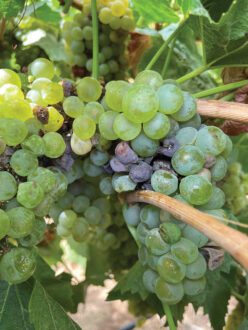
In 2023, we experienced high disease pressure. How does the current disease pressure in 2024 compare?
Recent data might provide some insights. The PMI from 2023 and 2024 is illustrated in Figure 1. In 2024, we had a high PMI right after budbreak, while in 2023, a low PMI was maintained from budbreak to the end of April, with an unusual cold spring and slow canopy growth. However, in both years, the PMI quickly spiked to 100 at the onset of May.
Currently, we observe a similar PMI trend, with a decline at the end of May followed by another spike to 100. Additionally, in 2024 significant precipitation after budbreak has created a conducive environment for phomopsis cane and leaf spot, promoting early season canopy growth and favorable conditions for PM and botrytis. As Figure 2 illustrates, there was a total of 2.8 inches of precipitation after break and especially in mid-April there was a rain event with >1 inch.
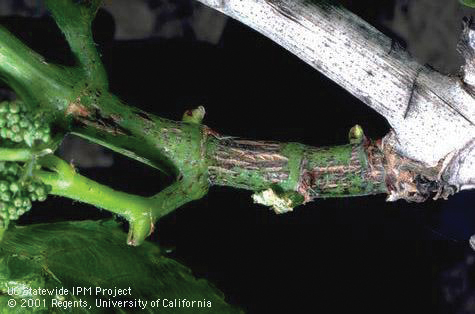

LESSONS LEARNED
Early detection and monitoring. One of the most critical lessons from last year is the importance of early disease detection and continuous monitoring. Implementing regular scouting routines and utilizing the PMI can help identify disease outbreaks early, allowing growers to intervene promptly with timely fungicide sprays and proper canopy management.
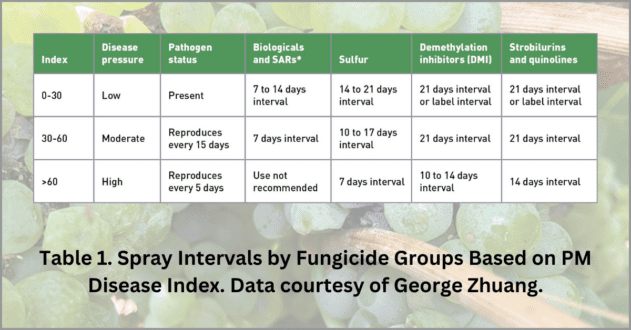
Cultural practices.
Proper vineyard management practices, such as canopy management, pruning techniques, and nutrient and water management, play a vital role in disease prevention. By optimizing vineyard conditions to improve airflow and reduce humidity levels, growers can create an environment less conducive to disease development and improve spray coverage.

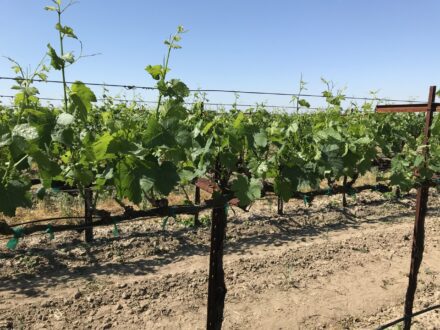 Shoot thinning when shoot length is about 8”-12” after the risk of spring frost passes can effectively manage yield and increase canopy airflow and spray coverage when irrigation is well checked. Basal leaf removal at fruit set either through manual or mechanical ways can reduce PM by over 50% without fungicides and increase spray coverage by 200 times.
Shoot thinning when shoot length is about 8”-12” after the risk of spring frost passes can effectively manage yield and increase canopy airflow and spray coverage when irrigation is well checked. Basal leaf removal at fruit set either through manual or mechanical ways can reduce PM by over 50% without fungicides and increase spray coverage by 200 times.
Water Management.
Vineyard water management is crucial for effective disease management for several reasons:
- Preventing canopy overgrowth: Over-irrigation can lead to excessive canopy growth, creating favorable conditions for fungal pathogens. This includes high relative humidity (RH), lack of sunlight penetration, minimal canopy airflow, and insufficient spray coverage.
- Reducing berry splitting: Excessive irrigation can increase berry size, leading to splitting or cracking, especially in tight cluster varieties. This condition can exacerbate cluster bunch rot.
- Managing nitrogen levels: Over-irrigation with high nitrate water can elevate the vine’s nitrogen status, promoting fungal growth and intensifying disease expression.
By optimizing irrigation practices, growers can help maintain a balanced canopy, reduce the risk of berry splitting, and manage nitrogen levels to create an environment less conducive to fungal diseases.
Susceptible Varieties and Vigorous Rootstocks.
Though all Vitis vinifera cultivars are susceptible to PM and botrytis, some varieties are more susceptible than others. In the San Joaquin Valley (SJV), susceptibility rankings can be generalized for several common varieties as follows: Carignan > Fiesta > Chardonnay > Thompson Seedless > Cabernet Sauvignon > Zinfandel > Rubired.
Vigorous rootstocks tend to produce larger canopies, which might increase relative humidity, reduce sunlight penetration, and decrease spray coverage compared to weaker rootstocks. Growers should be more proactive with canopy management and spray programs when the combinations of susceptible varieties and vigorous rootstocks are present.
Integrated pest management.
Adopting an integrated approach to pest and disease management is essential for sustainable grape production. Integrating cultural, biological and chemical control methods, while prioritizing environmentally friendly practices, can help minimize reliance on synthetic pesticides and mitigate the risk of pesticide resistance. Growers can refer to Table 1 to guide the spray interval based on the PMI and fungicide types.
The battle against grapevine diseases is ongoing and fraught with challenges, but it also offers opportunities for growth and innovation. By leveraging insights gained from experiences and embracing a proactive approach to disease management, grape growers can navigate the complexities of disease pressure with confidence, ensuring the continued health and vitality of their vineyards for generations to come.
— Written by George Zhuang, the viticulture farm advisor for the University of California Cooperative Extension at Fresno County and is a member of the Fruit + Vegetable 40 Under Forty Class of 2024.
















